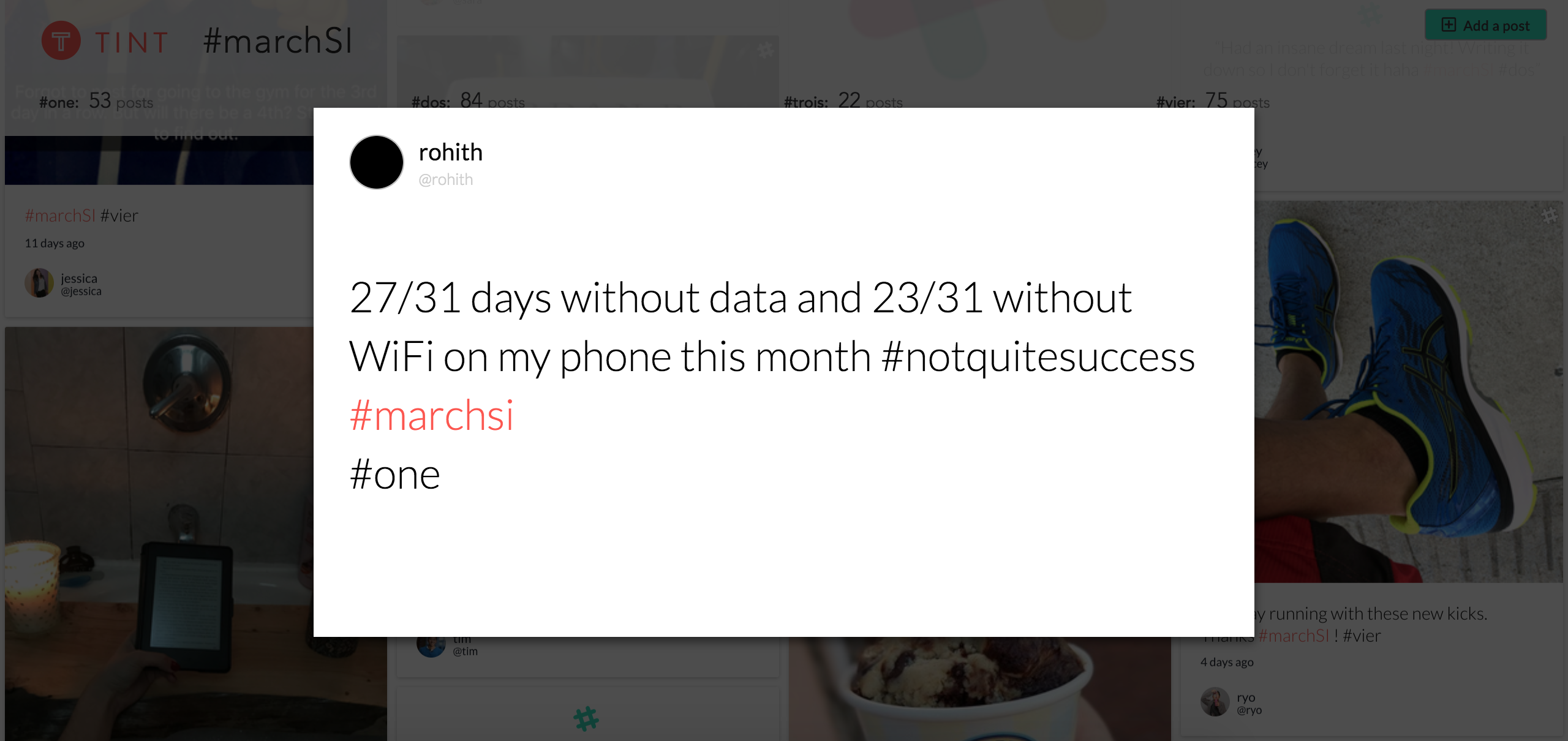With the new year comes new resolutions. While 62% of Americans make New Year’s resolutions, the percentage of people who report achieving their resolutions is a measly 8%. What accounts for the drop-off?
After running the monthly self-improvement program at TINT for over a year, I’ve watched many of my teammates set goals and achieve them with varying degrees of success. Based on my observations and a little research, here’s how I believe you can increase your chances of success when setting goals or resolutions.
The first piece of the puzzle is how you set your goal. The second piece is in the execution, including preparing for your goal in advance.
How to Set a Resolution
Success starts with how you set your goal. It’s not about making the goal easy or hard (although we’ll discuss that briefly later). It’s about making the goal specific and measurable, so you know exactly what you’re committing to doing, and whether or not you’re succeeding.
1. Make the goal specific
The more specific your goal is, the easier it is to make sure you’re making progress. Instead of “I want to work out more” try “I will run or bike every day for 30 minutes.” Instead of saying “I want to lose weight,” try “I am not going to eat after 5 pm.” For the TINT self-improvement program, I always encourage my colleagues to define their goals as specifically as possible. “Read More” gets converted into “Read a new book every week.” “Work on my drawing” gets converted into “draw a new sketch everyday.” Making your goal specific not only makes it easier to execute, it makes it easy to measure. Which brings us to #2…
2. Make the goal measurable
A specific goal should also be measurable. This will help you track your progress, and help you form better goals in the future. This doesn’t necessarily mean you should make your goal something you expect to achieve 100%. One of our founders Ryo researched goal setting for teams, and found that a well designed goal is something you can reasonably expect to achieve 80% of. This helps ensure that your goals push you, and are actually challenging. This means no cheating by making your goal really easy, but don’t make it impossible either.
3. Prepare in Advance
Don’t pick your goal the day you want to start, or the day before. Spend time in advance picking and thinking about your new goal before you embark on it. Research your goal and make a plan for how you’re going to achieve it.
For example, if you’re trying to go without an alarm clock for a month, you can prepare by tracking how long you naturally sleep for, and then go to bed early to make sure you’ll wake up naturally in time for work. Don’t simply throw out the alarm clock and hope for the best.
The importance of preparing becomes more obvious when you consider bigger, more ambitious goals. For example, a few of us climbed Mount Shasta as our self-improvement goal one month. No one would just show up at the mountain and try to climb it. Obviously we had to do research online, pick a route that is good for the time of year, buy / get our gear ready, and plan out the trip all the way from drive there to the drive home.

4. Commit
This one might be a little less tangible, but I think it’s an important part of setting yourself up for success. Before you begin, think about why you want to achieve your goal — what bigger goal is it helping you reach? How will it feel to accomplish it? Then decide that you are going to do it. Commit.
Keeping the “SMART” framework in mind while you set your goal can help:
Specific: Be as specific as possible.
Measurable: Establish concrete criteria for measuring progress toward the attainment of each goal you set. What does success look like?
Attainable: Do a quick gut check to figure out which goals are attainable, and prioritize accordingly. Make sure you’re not spreading yourself too thin.
Realistic: To be realistic, a goal must represent an objective which you are both willing and able to work towards.
Timely: A goal should be grounded within a time frame. What is your deadline?
Working Towards Your Resolution
Once you’ve designed your goal to maximize your chances of success, here comes part two — setting out correctly.
1. Establish a Routine
This is two-fold. First, when you do something regularly, at the same time each day or week, it helps you remember to do it and make it a regular part of your schedule. Secondly, doing something regularly over an extended period of time can help make it a lasting habit, that stays with you long after your “goal” has been reached.
Remember that designing your goal properly can help you do just that — instead of saying “I will get in shape,” say, “I will run for 20 min every day.”
I have seen much better results when the program forces people to do something every day or every work day, as opposed to just some open thing or even once a week. Some months, such as this month, we’ve asked people participating in the self-improvement program to commit to doing something for 21 days in a row. Other months, we let people set a goal with less regularity. Guess which types of goals form good lasting habits?
2. Have a Partner

When TINT team members have a partner working on the same goal with them, they are much more likely to accomplish it, as they are more motivated to do it. Our colleagues Ali and Ryo committed to doing p90x workouts every day for a month, and had a lot of fun doing it together, pushing each other to do it when one of them didn’t feel like it. One month, a handful of people in the office decided to wear posture bands to improve their posture together.
3. Track your progress
This isn’t a huge factor in success, but we did see some improvement around executing goals when we put a big poster for tracking daily accomplishments up in our office. We used stickers to mark each day someone achieved their daily goal — it served not only as a way to track progress, but as a good visual reminder of people’s goals.
4. Rewards
Rewards don’t actually help as much as you think, but they still help a little. Give yourself small incentives, ideally incentives that help you achieve your goal — such as new running shoes if your goal is to run every day.
What goals will you set for 2016? Our team is kicking off the year with this month’s self-improvement goal: 21 days to set a habit. Every participating team member has committed to doing something everyday, 21 days in a row. The idea is that this should cement the practice as a habit. We’ll report back at the end of the month to let you know how it goes.




